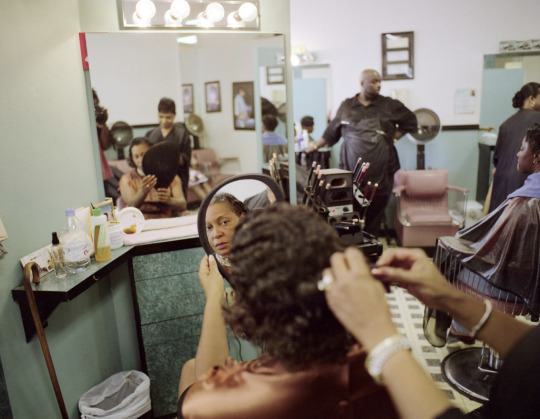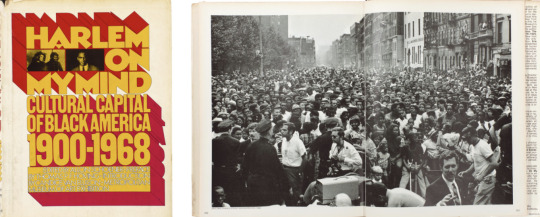Don't wanna be here? Send us removal request.
Text
Deadweight Degradation is my exhibit dedicated to black photographers throughout the years that have taught an important lesson on recognizing our own biases and prejudices through the form of art. When we perceive an individual, oftentimes we aren't taking into consideration the way we judge them. Thanks to historically biased mass media, our sterilized teachings of black history in schools, and lack of thorough understanding of the true roots of this county, we’ve become a byproduct of racism and bigotry in America. Because of this, I knew it was paramount to display how multifaceted African American individuals are and how they’re human beings who are barred to the deadweight of social degradation. In doing so, I chose to specifically celebrate black photographers and artists that have dedicated their field of work that challenges our social norms and brings attention to topics that are typically given a blind eye.
Within a historical and contemporary aspect, black individuals have experienced the most deep-rooted institutionalized systemic racism in the United States. Colonial ideology till this day infiltrates a variety of institutions and fields of work, resulting in ingrained bias and prejudice. Going into this exhibition, I thought it was integral for representation to be one of the most vital elements; and because of this, only African American photographers are included. I’ve selected five artists that have investigated the histories of racism, class, and family structures, while also analyzing our current racial hostility in the United States today.
“What’s remarkable about our history, about who we are, about how we conducted ourselves in the onslaught of history, is to maintain the core of our dignity… that is really the ultimate call of grace” (Carrie Mae Weems, Ours Photo Mag). Weems sheds light on how we as human beings have managed to freely go about our daily lives without putting into question the modern subjugation and acts of racism around us. With this exhibit, I hope individuals are able to understand how some platforms have the intentions of capitalizing on controversial images and reinforce the already ingrained ruinous stereotypes and biases of black individuals. Hopefully throughout this sequence of photos you will be able to actively reflect upon your thoughts that come to mind, and bring attention to your own biases and prejudices that arise to the surface. I aspire that each and every one of you are able to go forth encompassing the humanity behind human beings and understand how influential media can be, especially photography. Photography acts as a medium commanding the power to either uplift or repress individuals.
https://www.oursphotomag.com/blog/carrie-mae-weems-1980s
0 notes
Photo






Carrie Mae Weems
Family Pictures and Stories, 1981-1982, Carrie Mae Weems (entire sequence)
Carrie Mae Weems was born in 1953 in Portland Oregon and is considered to be one of the most influential contemporary artists of her time. Along with being a photographer, she was also a dancer before continuing her education at Berkeley where she studied folklore studies due to her interest in the social sciences. Within her work she’s explored the interrelationships between family, sexism, identity, the detriments of power etc. (Carrie Mae Weems Biography). Through her work, she’s shed light on social inequality, the veracity of prejudice African American individuals face in America, and has opposed the racist assumptions placed on groups who are subjugated. Within her project Family Pictures and Stories, 1981-1982 she captures her own family. Weems said this collection is in response to senator Daniel Patrick Moynihan and his prejudiced assumptions that black families experience such hardships due to their own matriarchal nature. She documented her family in the most natural way possible in order to display their troubles that aren’t typically depicted within society.
“My responsibility as an artist is to work, to sing for my supper, to make art, beautiful and powerful, that adds and reveals; to beautify the mess of a messy world…” (Carrie Mae Weems, Ours Photo Mag).
http://carriemaeweems.net/bio.html
https://www.moma.org/artists/7177
https://www.oursphotomag.com/blog/carrie-mae-weems-1980s
0 notes
Photo


Gordon Parks
"Harlem Gang Leader," Life, p. 98-99, Life magazine, November 1, 1948, From the collection of: The Gordon Parks Foundation (top photo)
"Harlem Gang Leader," Life, p. 100-101, Life magazine, November 1, 1948, From the collection of: The Gordon Parks Foundation (bottom photo)
Gordon Parks was the first African American research photographer in 1948 to publish his work on the Harlem gangs at Life magazine. He was the type of photographer that captured the natural and compassionate side to individuals, never mind their background, ethnicity, or socioeconomic status. This kind of nuance was reflected directly within his work. He exercised visual and racial literacy by investigating how words and images communicate multifaceted realties, convey points of views & biases, and have the power to sway and manipulate meaning.
https://artsandculture.google.com/story/ZQVhR9HtoggA8A?hl=en.
1 note
·
View note
Photo


Deborah Willis
Deborah Willis, Untitled, 2010 (top photo)
Cover and Spread from Harlem on My Mind: Cultural Capital of Black America, 1900-1968 (Random House, 1968). (bottom photo)
The influential curator and photographer Deborah Willis has pioneered with her work that have been featured at the Smithsonian Institution museums. She is a professor at the arts and sciences at NYU Tisch school where she teaches students on ethnicity, arts, photography, visual culture, and the photographic history of slavery and emancipation. She’s an author, has received multiple fellowships, and her work has won a NAACP. She believes photography can be transformative not only for the viewer but for the photographer as well.
https://aperture.org/editorial/why-deborah-willis-thinks-the-photobook-can-be-transformative/
https://www.thephoblographer.com/2021/02/16/7-legendary-black-photographers-we-want-to-show-love-for/
0 notes
Photo



Temi Coker
This collection of Coker’s art derives from 2020 with his collaboration with Foot Locker and their “ForTheLove” campaign
Temi Coker is an artist and photographer who is from the Yoruba tribe in West Africa. His African roots is where a great portion of his inspiration comes from; from the ceremonies, weddings, culture, etc. This is where he fell in love with colors and different styles. Because of the limited resources he had, this forced him to work with what he had, which in turn forced his mind to create infinite possibilities (PAPER, Temi Coker: From Court to Canvas). He found a love with the visual art of basketball, “Visual art is all about attention to detail, storytelling, technique and style. I truly believe the same goes for basketball. Each player has a story, there are different techniques and styles on how they handle the ball on the court.” (Coker).
https://www.papermag.com/temi-coker-feature-2647217399.html?rebelltitem=47#rebelltitem47
0 notes
Photo

Moneta Sleet Jr.
Moneta Sleet’s Prize- winning photo of a grieving Coretta Scott and Bernice King, 1969
During the funeral of Martin Luther King Jr. Moneta Sleet Jr. made his way to the front of the Ebenezer Baptist Church to photograph Coretta King, MLK’s widow. This photo alone won him a Pulitzer Prize and originally wasn’t organized to happen. Originally, there weren’t supposed to be any photojournalists at the funeral, but once Coretta King heard of Moneta she insisted he cover the funeral. She became the first African American to win a Pulitzer prize in photography.
https://www.pulitzer.org/winners/moneta-sleet-jr
1 note
·
View note